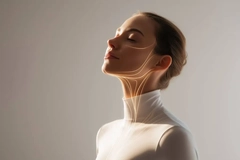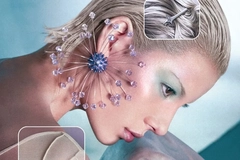Black beauty: Spate and Sula Labs uncover “evolving” inclusive market and cosmetic trends

30 May 2024 --- Spate releases The Black Beauty Consumer Trends on TikTok with insights from Sula Labs. The report gives brands insights on skin concerns and the significance of diverse hair types to embrace inclusivity and understanding of Black consumers.
Personal Care Insights speaks with Yarden Horwitz, co-founder of Spate, about the report and the importance of beauty companies catering to Black consumers, a demographic some say is overlooked.
What are the most notable findings from the report?
Horwitz: The report highlights significant trends among Black beauty consumers on TikTok, emphasizing their distinct needs and preferences. AJ and her team at Sula Labs have graciously contributed their professional and personal experience to offer a well-rounded understanding of the preferences and priorities of Black consumers today.
Notable findings include a marked interest in skin care issues such as hyperpigmentation, acne and dark spots, as well as the popularity of specific products like pimple patches, kojic acid soap and no-white-cast sunscreens. Additionally, hair care trends show a preference for natural hairstyles, protective styles and products promoting hair growth. Makeup trends highlight the demand for products suitable for dark skin tones, with significant traction for hashtags like #darkskinmakeup and #pinkblush.
How do beauty trends in the Black community differ from general beauty trends? How are they similar?
Horwitz: Beauty trends in the Black community are uniquely tailored to address specific skin and hair care needs that arise from higher melanin content. For example, there is a strong focus on products that combat hyperpigmentation and prevent acne scars, as these issues are more prominent in melanin-rich skin. Hair care trends also reflect a preference for protective styles and natural hair maintenance. However, similarities with general beauty trends include the widespread use of skin care routines, the desire for effective acne treatments and the importance of product efficacy and safety. Both communities value innovative, high-performing beauty products that enhance their natural features.
Why is this research necessary for the industry and society?
Horwitz: This research is crucial as it underscores the need for inclusivity in the beauty industry. By understanding the specific needs and preferences of Black beauty consumers, brands can create products that are more effective and appealing to this demographic. This helps brands tap into a growing market and promotes a more inclusive beauty standard. From a societal perspective, addressing the unique beauty needs of the Black community helps combat systemic biases and fosters a sense of representation and acceptance.  Spate calls attention to brands appealing to Black consumers.
Spate calls attention to brands appealing to Black consumers.
How can the report help beauty brands?
Horwitz: The report highlights the importance of cultural understanding and sensitivity in product development and marketing. Brands that genuinely engage with and listen to their consumers will be better positioned to create products that not only meet the needs of Black beauty consumers but also celebrate and enhance their natural beauty. By embracing inclusivity, the beauty industry can foster a more diverse and accepting society where everyone feels represented and valued.
Is the world of personal care products made for darker skin tones growing or shifting?
Horwitz: The beauty market for darker skin tones and texture hair is evolving. This shift is driven by increased consumer awareness and demand, amplified by social media platforms like TikTok. Influencers and everyday users share their experiences and product reviews, highlighting gaps in the market and pushing brands to innovate. Spate data can capture the nuances of this and where the areas of growth and evolution are strongest.
How can the beauty industry continue to advance and become more inclusive? Do you think this will happen?
Horwitz: The beauty industry can advance inclusivity by conducting thorough research into the needs of diverse skin tones and hair types, investing in product development that addresses these needs and engaging with the communities they aim to serve. They can also work with specialized labs like Sula Labs with nuanced, expert-level and firsthand knowledge of the Black beauty consumer. Brands should also prioritize diverse representation in their marketing and collaborate with influencers from various backgrounds to authentically reach their audience. This shift is already happening, as seen in the increasing number of inclusive product lines and the success of brands prioritizing diversity. Continued consumer demand and social media advocacy will likely drive further progress.
By Sabine Waldeck












